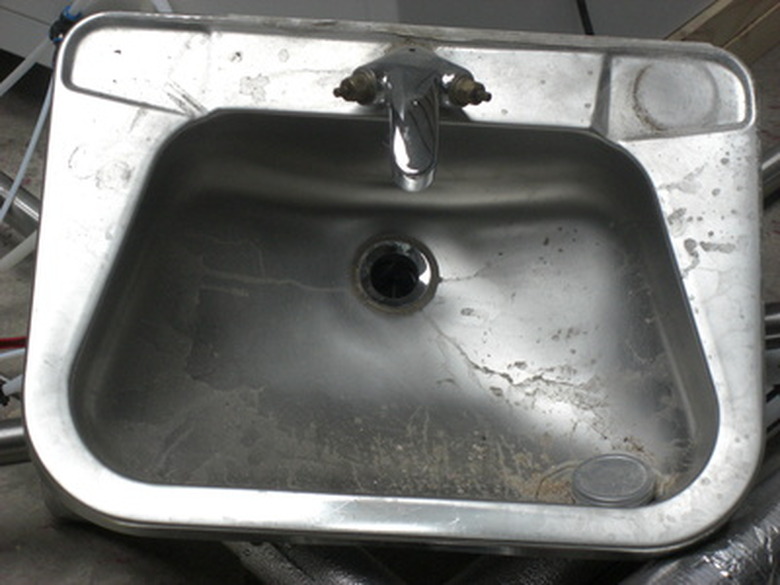How To Silver Solder Stainless Steel
Generally, welding holds stainless steel parts together best. You can silver solder stainless to itself or to brass or copper to make easier connections without risk of corrosion problems. The joint will only be as strong as the silver solder itself. You can use any silver solder, but you will need an acid-based flux specifically manufactured for nickel or stainless steel. Getting the steel hot enough presents the biggest problem, so be careful not to get it too hot, as it may cause surface oxides to form that reduce the quality of the stainless steel finish.
Step 1
Clean all surfaces to be soldered with solvent and a wire brush to remove all grease, corrosion or dirt.
Step 2
Apply a coating of flux to the stainless steel parts you are connecting. If you are soldering brass or copper parts to the stainless steel, tin them first by heating them and applying a thin coat of solder to the area that connects to the stainless steel.
Step 3
Hold your parts together with wire or clamps. Make sure the surfaces fit flush. Silver solder will not fill gaps.
Step 4
Heat the parts with a torch until the solder flows onto the joint. When the parts are hot enough, the solder will instantly turn to liquid when it touches the metals, then it will flow into the joint. If it does not do this, keep heating the metal until it does, but do not heat the solder directly. Only allow the hot metal to melt the solder.
Step 5
Remove the torch and solder as soon as a sufficient amount of solder melts onto the joint. You don't need much, and a glob can look ugly.
Step 6
Allow the metal to cool before touching or cleaning it. You can dunk it in water to cool it faster.
Things Needed
- Emery cloth
- Wire brush
- Flux
- Soldering torch
- Silver solder
- Clean rag
TL;DR (Too Long; Didn't Read)
The type of silver solder you use will determine the strength of your joint. Generally speaking, the higher the silver content, the stronger it will be. More silver content needs more heat to melt.
You can clean your finished joint with emery paper and solvent to remove any scale.
Warning
Do not silver solder electrical connections to stainless steel, as they will deteriorate over time from the acid flux needed to make the connection.
Electrical connections to stainless steel should be made by drilling a hole and using nuts and bolts with terminal lugs, or plate the stainless first with copper or nickel.
Be careful not to scorch or burn anything near where you are working. Your metal will get very hot, but it will not glow, so you won't be able to see that it is hot.
Cite This Article
MLA
Asmus, Richard. "How To Silver Solder Stainless Steel" sciencing.com, https://www.sciencing.com/silver-solder-stainless-steel-6144307/. 24 April 2017.
APA
Asmus, Richard. (2017, April 24). How To Silver Solder Stainless Steel. sciencing.com. Retrieved from https://www.sciencing.com/silver-solder-stainless-steel-6144307/
Chicago
Asmus, Richard. How To Silver Solder Stainless Steel last modified March 24, 2022. https://www.sciencing.com/silver-solder-stainless-steel-6144307/
